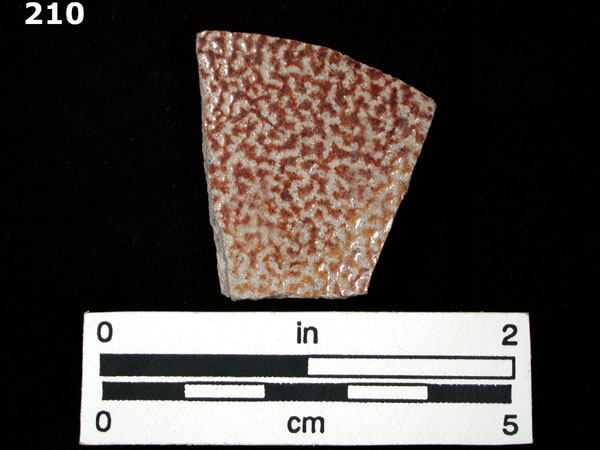View all examples of STONEWARE, BROWN SALT GLAZED, ENGLISH

| Type Name: | STONEWARE, BROWN SALT GLAZED, ENGLISH |
| Type Index: | STONEWARE |
| Production Origin: | ENGLAND |
| Date Range: | 1690-1775 |
| Defining Attributes: |
Thick, grey stoneware paste, often with a grainy appearance. Vessels are dipped in brown slip, then salt glazed to produce a mottled, pebbly brown surface. Interiors are usually unglazed. Although usually undecorated, vessels can have impressed incised, or sprig-molded designs indicating royal initials, capacity standards, or tavern symbols and owners. |
| Vessel Forms: |
CROCK JUG MUG |
| Comments: | English Brown Salt-glazed Stoneware is most commonly found in drinking vessel and serving forms. It’s production is associated with Fulham, however since several other English production centers were also active it is often referred to as "Fulham-type" ware. It largely replaced Rhenish brown stoneware in England after 1700. By ca. 1730, American potters began producing brown stoneware that was often indistinguishable from the English Fulham-type. After ca. 1760, names on vessels were stamped rather than incised. |
| Published Definitions: | Noel Hume 1969; Hildyard 1985; Noel-Hume 2001 |